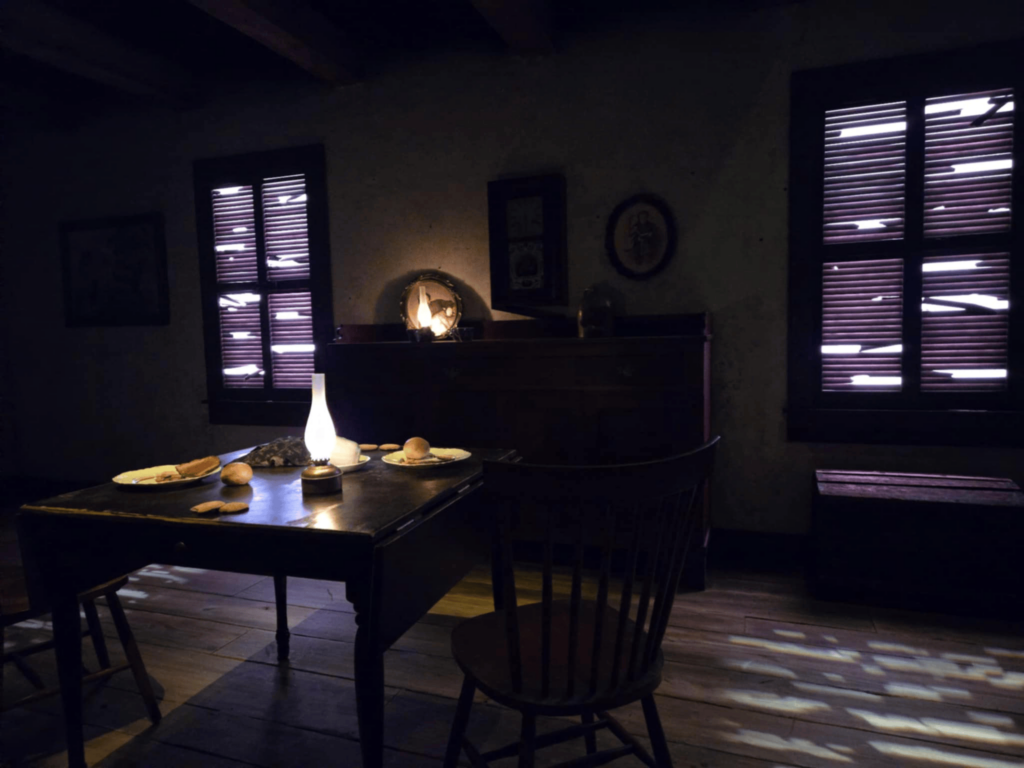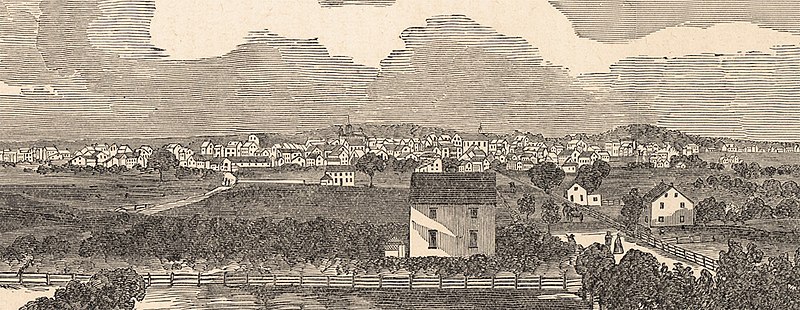Saying that Gettysburg, PA has a lot of museums doesn’t quite do it justice.
By my count, the borough boasts no fewer than 15 museums. That may not sound impressive at first blush, but when you subtract tourists and the college, Gettysburg has a population of only around 8,500 permanent residents. Compare that to Washington, DC, which holds 80 museums and about 679,000 residents.
To crunch the numbers for you, that brings DC to a museum-per-capita count of 1 per 8,487 and Gettysburg to 1 per 567. Said another way, Gettysburg is 15 times as museum-dense as Washington, DC. That’s gotta be some kind of record.
And no, Gettysburgians aren’t born museum-goers. If anything, quite the opposite. Although all but two of Gettysburg’s museums center the Civil War’s 1863 battle, few locals would count the Civil War among their community’s top priorities. Civil War tourism, maybe. Its stranglehold on the local economy and drain on local infrastructure, probably. But not the Civil War itself.
Because where in the gaudy capitalist kitsch of Gettysburg’s museums is the story of actual Gettysburgians? Tourists on historical hajj to the Mecca of Gettysburg aren’t terribly interested in the stories of its wartime residents, whose lives and agency were arguably most violated by war’s trespass. On average, visitors make rare exceptions only for morality tales of pure, virtuous maidens who selflessly gave of their time and labor to ease the burdens of weary boys in blue and gray. Ask a casual Battle of Gettysburg aficionado to name a local civilian, and they’ll flash you a smug, knowing smile. Tell them they must answer without listing beatified Jennie Wade or Tillie Pierce and watch their faces go white.
We must remember that Gettysburg was a home before it was a killing ground. When Union and Confederate forces fired the first shots on the morning of July 1, 1863, who in town lay sleeping in their beds? Who was kneading dough or braiding hair or practicing the alphabet? In that sleepy little town, whose homes had witnessed their last bloodless sunrise? Whose eyes traced a vulture’s sweeping arcs and imagined for the final time the distended bellies of dead squirrels, not dead men?

To some, exploring these wider stories opens uninteresting lines of inquiry into small, ordinary lives. For many descendants of those small, ordinary lives, though, the disinterest of outsiders reeks of elitism. Imagine being reminded daily of three short, brutal days in your hometown’s long, rich history by greedy outside fingers tearing at the ragged, half-healed wound.
Even so, cash is king, and Civil War tourism is what’s keeping the lights on in Gettysburg. The borough lacks the apple bounties of neighboring Biglerville, the chocolate empire of Hershey, the medical or manufacturing dominance of Pittsburgh or Philadelphia. Its only other bragging right, the 1832-founded Gettysburg College, is privately owned and largely economically insular. Call it a Catch-63.
So for now, those $61.4 million dollars in annual Civil War tourist spending has Gettysburg and its bloody history at an impasse. What’s a borough to do?
For Gettysburg, it seems the only way out is through. To that end, the Adams County Historical Society in 2023 took a step that was equally uninspired and risky: It opened a new museum in Gettysburg.
The museum’s mission is simple. So simple, in fact, it’s right there in its name: the Gettysburg Beyond the Battle Museum. On the website, the ACHS describes the museum’s purpose:
[Gettysburg Beyond the Battle] tells the remarkable story of Gettysburg civilians and their extraordinary experiences before, during, and after the Civil War. Through twelve interactive exhibit galleries packed with rare artifacts, the museum explores the story of Gettysburg like you’ve never seen or heard it before.
Reception of the museum has been mostly warm. More than one online review calls it “the best museum in Gettysburg.” Readers of USA Today voted it 2023’s Best New Museum. In one review, Google Maps Local Guide Supermuttt calls the visit “a really amazing experience to learn about the town and not just the battle” and recommends to every “tourist, history buff[,] and local to go through this at least once.” Clearly, the museum is well liked.
My hot take from visiting on August 31: Despite its inclusion of dinosaurs, indigenous peoples, and wars throughout American history, the Gettysburg Beyond the Battle Museum ultimately accomplishes its mission more in name than in practice.
I’m not alone in my criticism. Earlier this year, visitor Matt Wright posted, “The museum was nicely done, but it says [‘]beyond[.’] I really thought [there’d] be more local history besides the battle of Gettysburg, which was 95% of their focus . . . There’s plenty of museums in Gettysburg focused on the Battlefield and the battle itself[. Once] again, Gettysburg is just focused on the battle itself and not outside of it.” Someone at ACHS responded shortly after with “Hi Matt, thank you for your feedback. Approximately two-thirds of our museum is dedicated to topics beyond the battle, such as natural history, the Colonial era, and the local agriculture industry. Additionally, a significant portion related to the battle is focused on civilians. . . . We hope you will consider coming back on another day to enjoy all of the stories told in the museum.”
The only problem? A picture says a thousand words, and while Matt’s 95 percent claim may have been hyperbolic, the museum’s exhibit map supports the core of his critique. Out of 12 exhibit rooms, five explore the Civil War and its immediate aftermath. And the museum’s crown jewel, the Caught in the Crossfire experience? Nothing but battle.

In the multimedia simulation, museum visitors sit in the drawing room of an 1863 Gettysburg house. In the cellar below, the house’s owners cower while skirmishers pour through the streets. As the simulation unfurls, artillery fire shakes the room, bullets punch holes in the walls, and enemy combatants cast shadows across the drawn curtains. It’s obvious that a lot of consideration and labor went into the design, production, and build of the exhibit. Even so, the experience does exactly what the museum tries to avoid: It doubles down on the battle’s centrality in Gettysburg’s history and identity.
Largely missing from the exhibits are the stories of average post–Civil War, twentieth century, and twenty-first century Gettysburgians. I know from experience that they tend to be a resilient, proud, hardworking, and culturally diverse bunch. As I explored the museum, I found myself wishing I could’ve learned more about them in their own right, unfiltered by the tired lens of Civil War history.
The museum’s administration tosses modern-day residents a bone here and there. Local Adams County adults can enjoy a $2 discount on ticket cost—not substantial, but certainly better than Gettysburg NMP, which offers reduced rates only to seniors, veterans, active-duty military, and AAA members. Adams County students can enter Gettysburg Beyond the Battle free of charge, though that privilege isn’t reserved for residents and extends to all Gettysburg College students. Call me cynical, but to me, these discounts feel like the tourism industry’s halfhearted apology for decades of pushing locals to the margins of their own hometown. And since the museum is run by the Adams County Historical Society, it all feels a little like selling out.
Gettysburg Beyond the Battle positions itself as telling a fresh story about the historical land, species, and people of Gettysburg. What visitors actually find, though, fails to live up to that promise. At the end of the day, the museum—well done in its own right—offers largely the same old song and dance as it claims to be a response to: stories of lionized great men who passed through town, leaving giant boot prints in their wake.
Active museums in Gettysburg, PA, ordered alphabetically:
- Gettysburg Beyond the Battle Museum
- Gettysburg Museum of History
- Gettysburg Heritage Center Museum
- The Shriver House
- David Wills House
- Gettysburg Diorama & History Center
- World War II American Experience
- Jennie Wade House Museum
- Gettysburg National Military Park Museum & Visitor Center
- Seminary Ridge Museum and Education Center
- Lomas Center Museum
- Ticket to the Past—Unforgettable Journeys: A Virtual Reality Experience at the Gettysburg Lincoln Railroad Station (presumably funded per letter in its name)
- Civil War Tails at the Homestead Diorama Museum
- Gettysburg Black History Museum
- Children of Gettysburg 1863® (formerly the Rupp House History Center)
